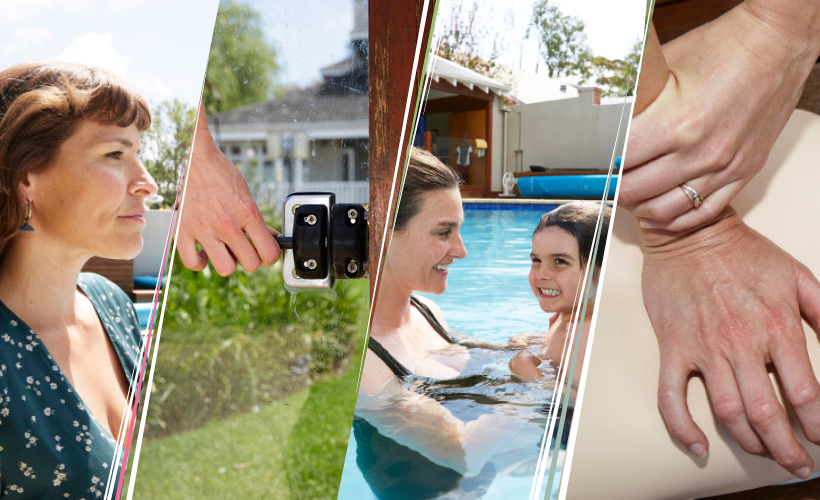
Drowning happens quickly and silently and the impact on families can be devastating.
Children aged 0 to 4 years are at high risk of drowning. Young children are naturally curious and attracted to water but do not yet understand the concept of danger.
Strategies for the prevention of child drowning are well understood and include active adult supervision, restricting a child’s access to water, often using correctly installed and regularly maintained pool fencing, teaching children water awareness and learning resuscitation techniques. These are not individual strategies but should be used together for maximum safety; this means that, if one line of defence fails, there are other prevention measures actively working to prevent your child from drowning.
Keep Watch is aimed at preventing children aged 0 to 4 years from drowning by getting parents and carers to undertake these four simple actions:
- Supervise. Actively supervise children around water
- Restrict. Restrict children’s access to water
- Teach. Teach children water safety skills
- Respond. Learn how to respond in the case of an emergency
Supervise
Always Keep Watch of your child in and around water. Supervision is the single most important thing you can do to keep your children safe around water.
Active supervision means focusing all of your attention on your children all of the time, when they are in, on or around the water. Parents need to be within arms’ reach, interacting with children and ready to enter the water in case of an emergency. When you’re in or around water with your child, supervision should be ‘eyes on’ and ‘hands on’ at all times.
Parents are busy and often try to do many things at once to save time. However, multi-tasking can lead parents to become distracted. Children can wander away unnoticed while parents attend to other tasks such as answering the front door, reading an email or attending to dinner in the oven.
Older children should never be left to supervise younger siblings around water.
Restrict
Prevent your child's access to water at all times. Having barriers around water can slow kids down and give you more time to respond if you lose sight of them.
Restricting a child’s access to water can be done by placing a barrier between the child and the water. This can be done by placing a barrier around water, such as a pool fence with a self-closing and self-latching gate, closing the door to the bathroom after use, covering pools, spas and tanks, placing mesh on water features and fish ponds, and securely fastening lids on nappy buckets. Inflatable pools with a depth greater than 30cm also need to be fenced in accordance with State or Territory legislation.
If this is not possible, place a barrier around the child using a child safe play area. This can be used inside or outside the home and is especially effective for water that cannot be fenced, such as dams on farms.
It’s a great idea to do a thorough check of your pool fence before summer starts. Download our Home Pool Safety Checklist for tips on what to look for.
Teach
Teach your child to be water confident by making them 'water aware'. This combines a range of strategies and activities designed to keep your child safe when in, on or around water.
It is important to discuss water safety with your child and set some rules about what to do around water and how to use them consistently in all water environments. This includes teaching them to check for and remove water hazards.
Water familiarisation involves teaching your child basic water safety and survival skills to build their confidence around water.
Water awareness or familiarisation classes focus on the gradual introduction of very basic skills for children aged 6 to 36 months like moving in the water, getting the face wet and blowing bubbles. The next level teaches water confidence to children aged 3 to 5 years.
Remember that even a child who can swim can still drown so there is no substitute for supervision.
Respond
Learn how to carry out cardiopulmonary resuscitation (CPR) and call Triple Zero (000) in an emergency.
CPR involves stimulating the heart and breathing air into the lungs to preserve or restore life. Resuscitation involves establishing or maintaining an airway, breathing and circulation.
If your child is ever missing always check water locations both inside and outside before looking elsewhere. A family member is usually the first on the scene in an emergency situation. In fact, many children are alive today because their parents knew how to perform CPR and responded quickly.
Royal Life Saving encourages everyone to learn CPR – it can mean the difference between life and death. Make the time to complete a CPR course and refresh your skills regularly.
